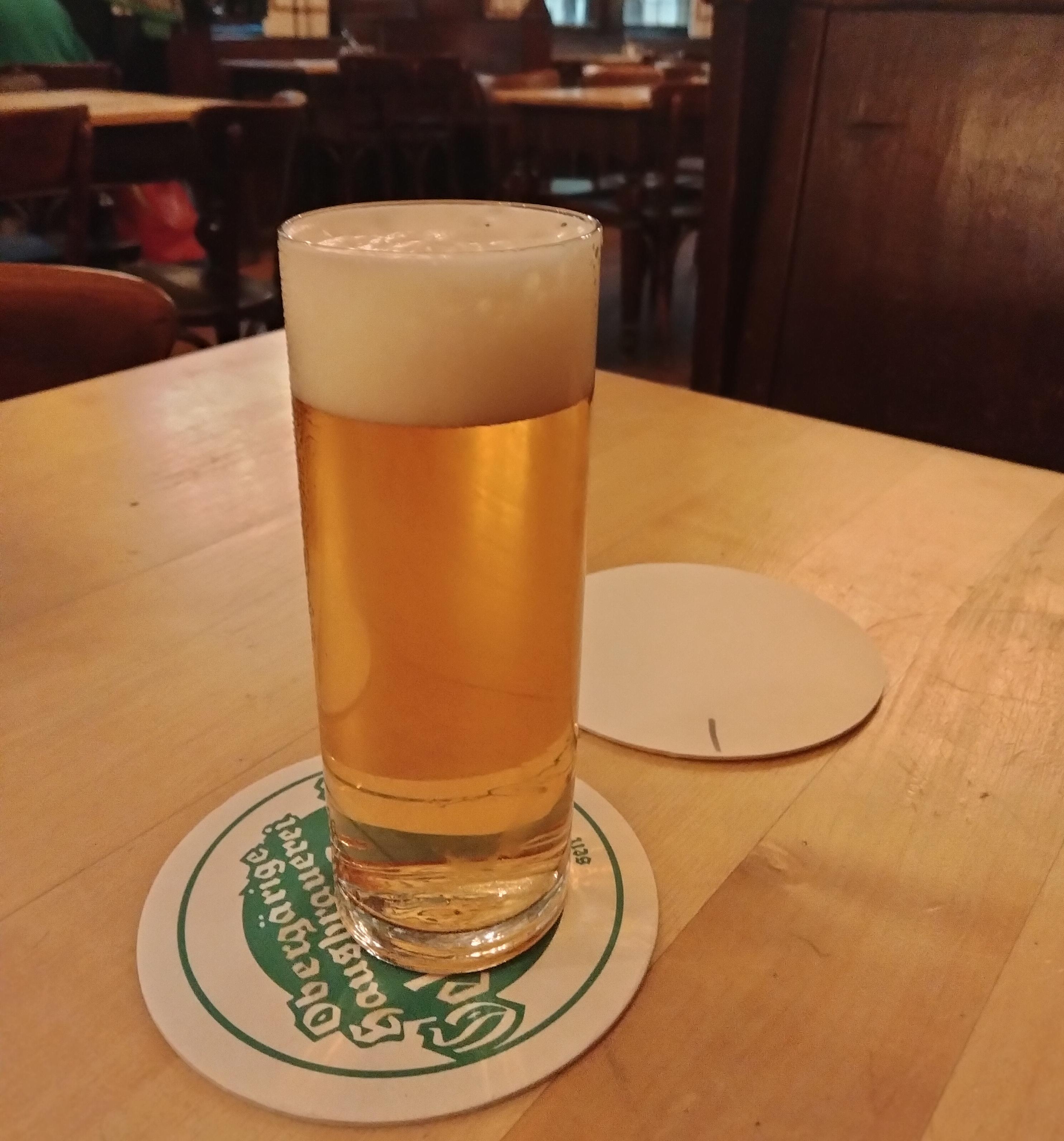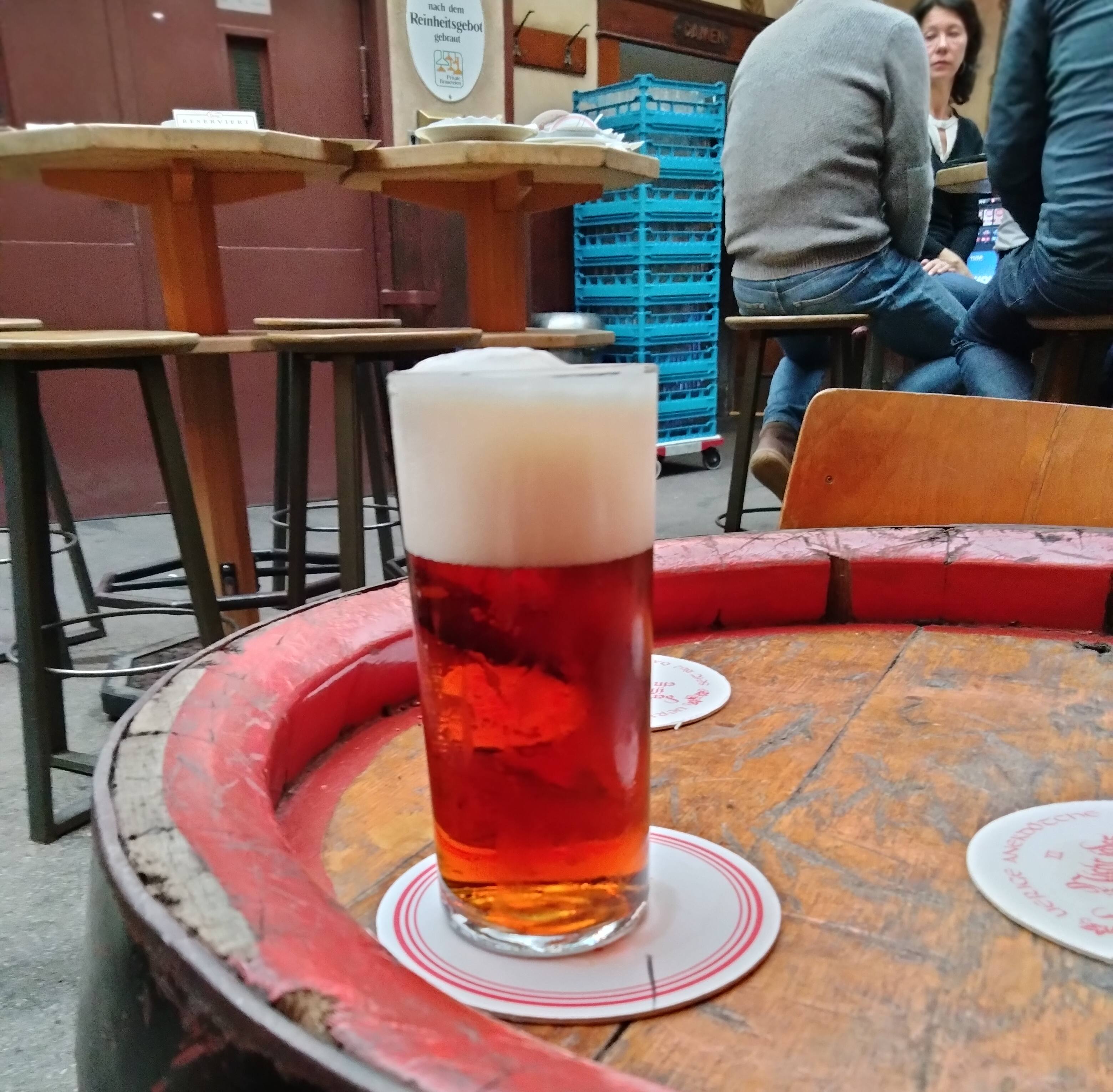Kölsch vs. Altbier | A Tradition of Competition
It’s no secret that Germans are proud of their beer traditions, with residents of each region proclaiming that their brew is the best. This competitiveness is most clearly embodied in the industrial cities of Cologne (Köln) and Düsseldorf. Kölners proudly promote their Kölsch while Düsseldorfers claim that Altbier is the way to go.
Though just 27 miles apart, each city fiercely defends its traditional style. Both cities have multiple breweries and bars in their downtowns but you’ll never see an Altbier in Köln or a Kölsch in Düsseldorf.
Kölsch vs. Altbier — Is There a Difference?
So how different are these brews anyway? US beer drinkers are most familiar with Kölsch, a very light, clean lager that craft breweries roll out as a summer seasonal. Altbiers are less common, but still pretty easy to find. They’re lagers as well but a bit darker, thicker and maltier with less of a seasonal association. In their homeland, both beers pour incredibly crisp with uncomplicated and focused flavors thanks to Reinheitsgebot (the German brewing purity law).

Köln breweries and bars serve up Kölsch that is exceptionally fresh, clean and lighter than much of what US craft breweries produce. They’re very simple beers with light noble-hop bitterness and often nothing more. Some varieties I tried had hints of fruity esters or breadiness on the nose and in the flavor but all were easy-drinking. These beers act as a social lubricant and facilitate good times with friends, vs. monopolizing the conversation.
In Düsseldorf, Altbiers have certain similarities to Kölsch — lighter than US versions and very clean without much complexity to distract from the malt and hops. However, Altbier pours thicker and copper colored with a more robust head. It is also more robust in flavor, with roasted malt predominating. Hops is a minor player. Though somewhat more flavorful than their neighbors from Köln, Altbiers are also smooth, balanced and easy-drinking.

Unique Service Experience
One of the most fun parts of experiencing these beers in their homeland is how they’re served. Tradition calls for small, thin .2-liter glasses (approximately seven ounces) which, given the easy-drinking nature of these brews, requires frequent refills. Servers deliver these little bundles of joy in a unique tray called a kranz. Each trays carries a dozen or so glasses in special slots. Servers constantly circulate with loaded trays, swapping full brews for empties. Because most everyone is drinking the same thing the servers don’t really take orders; they just keep delivering glasses of Kölsch or Alt.
The bar area is a whirlwind of motion, with bartenders filling a constant line of glasses, loading kranz after kranz while servers rush in and out unloading empties and picking up fresh brews. Needless to say this small-portion service requires lots of pouring and dishwashing, along with numerous trips by the waiters. So much for fabled German efficiency.
Order Kölsch & Altbier Like a Pro
If you’re visiting a beer hall in either city, ordering a brew is easy since there really aren’t options. Most taprooms serve only their own Kölsch or Alt. When the servers come by, just say bier; they’ll know what you mean.
Bars will be similar. While they typically have more style options, bartenders will automatically assume you want a pour of the house Kölsch or Altbier unless you specifically ask for something else.
Running Up a Tab
The final, and somewhat charming, aspect of the tradition is the accounting. Every time the server brings a new brew he marks your coaster (occasionally the tally is marked directly on the table or bar). When you’re done, the server counts the tick marks and gives you the damage. Generally each beer costs $2-3.
As you may imagine, it’s easy to rack up a lot of tick marks with these light and easy-drinking beers. The highest count I saw was 25 and the guy was still going when I left. Yep, that’s a full five liters of beer.
Celebrating Deliciousness
In the interests of objectivity I felt the need to sample a number of each to try and settle the Kölsch vs. Altbier question. Despite their geographic proximity, it’s clear that Köln and Düsseldorf have developed distinctive and delicious brews.
So is one of them better? Like most beer questions, beauty is in the tongue of the beholder, or something like that. Personally, I can’t say that I prefer one over the other, as they both have excellent character. However, in a concession to US beer sensibilities I’d definitely prefer Kölsch on a hot summer day, while more robust Altbier seemed more appropriate for the chilly fall days when I visited.
Jump In & Grab a Brew!
While it might seem a little intimidating to walk into a raucous, locals-only beer hall, it’s worth taking the plunge. Servers speak English and “beer” sounds the same in both languages. Köln and Düsseldorf have multiple breweries/beer halls in their downtowns and any would be a good starting point.
A couple of my favorites in Köln were Päffgen and Brauhaus Sion. Päffgen is a 10-minute walk outside the core tourist zone but worth it for the excellent beer and locals-only atmosphere. Sion is right in the heart of things and thus a more touristy vibe but still a great old-school beer hall. In Düsseldorf, both Uerige and Füchschen are right downtown and have great examples of Alt. All of the taprooms also serve food so it’s easy to pair the local brews with hearty and delicious German fare.

So there you have it — Kölsch vs. Altbier 101 for the next time you make it to Germany or even to an authentic German craft brewery here in the US. You really can’t go wrong with either style for a clean, classic and tasty drinking experience.
Featured image: Füchschen in Düsseldorf








Submit a Comment